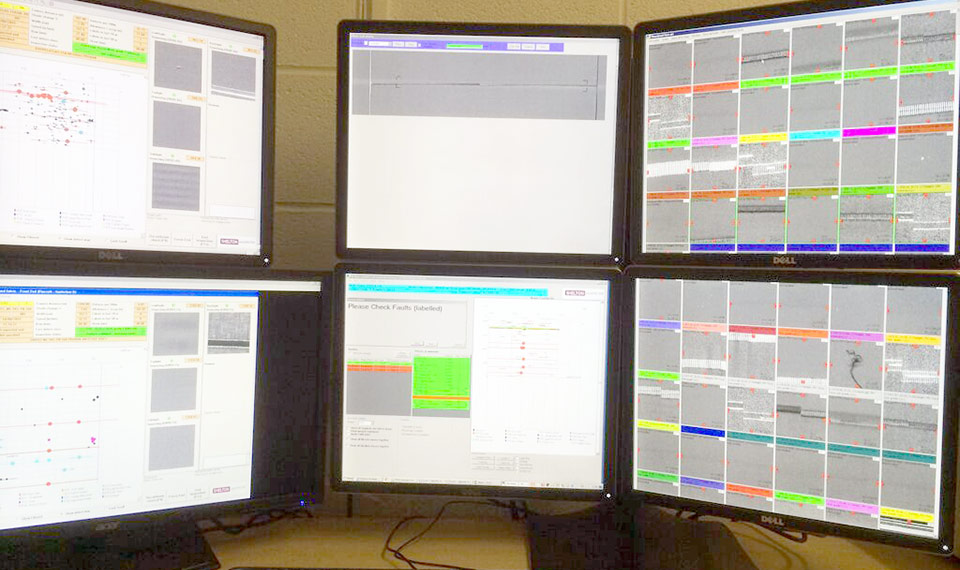Return on investment through Cut Plan Optimisation
Fabric is often produced in large batches for processing efficiency, then cut into a number of shorter rolls, or directly into panel parts for the final product.
The decision on where to cut can have a dramatic effect on the profitability of the fabric processing business.
The problem
Traditionally fabric has been inspected and cut to small rolls manually by placing the large process batch behind an illuminated area on a fabric rolling/inspection machine. The human inspector runs the fabric at a low speed to enable them to see and mark defects, then completes a small roll within the required length tolerance.
This process has a low throughput because of the need to visually see defects as well as creating significant waste due to cutting position inefficiency.
Because the human inspector does not know what defects are in the fabric and where they are located, they may complete a roll a few metres before a major defect that has to be cut out, therefore creating a short piece of otherwise good fabric that has to be scrapped purely because it is too short to sell.
In addition where defects have to be cut out, or removed from the fabric, the position chosen by the operator to make the cut can vary with respect to the defect boundary resulting in unnecessary waste at the margins of the defects. Whilst each of the cut margins only produce small amounts of waste per cut, the total over a period of time can be significant and well worth recovering.
The solution
Shelton Vision have created an integrated machine vision process for fabric inspection that creates a detailed defect map for each large process batch of fabric, where defects are automatically classified and graded.
The defect map is a virtual form of the fabric batch that has been inspected and pre planned cutting solutions can be applied to the map in its virtual form to calculate the optimum outcome from cutting to smaller rolls, or indeed product panels.
The WebOptimiser part of the Shelton Vision solution has the cutting requirements for each customer/product pre loaded, such as minimum and maximum roll length, the allowable number of defects, or demerit points per roll, which defects have to be cut out, maximum short piece length etc.
Once the cutting rules are applied to the virtual batch map the WebOptimiser creates an optimised cutting plan and reports the yield and cut plan details for acceptance. The electronic cut plan is then transmitted to the machine on which the batch is going to be cut (either automatically, or manually) and the calculated yield becomes the known result of the cutting process.
Shelton vision ensure this by providing a feature called WebViewer on the re rolling/cutting machines that ensures accurate synchronisation between the fabric and the cut plan and therefore accurate and controlled cut positions according the the cutting plan.
The outcome
Being able to calculate the optimum cutting plan for any batch using computer based optimisation techniques allows the producer to squeeze the maximum yield from their production.
This often amounts to between a 2% to 3% increase in yield compared to the manual inspection and cutting process as well as a significant increase in throughput in the inspection department.
The value of such an increase in yield is an equivalent percentage of turnover being added to the net profit line. So for a company with a turnover of $50,000,000 the resulting benefit of a 1% yield increase is $500.000…
Testimonial
“Following installation, we have experiences a 2% to 3% increase in yield compared to the manual inspection and cutting process, which is fantastic.”
– John Smith, Operations Manager


